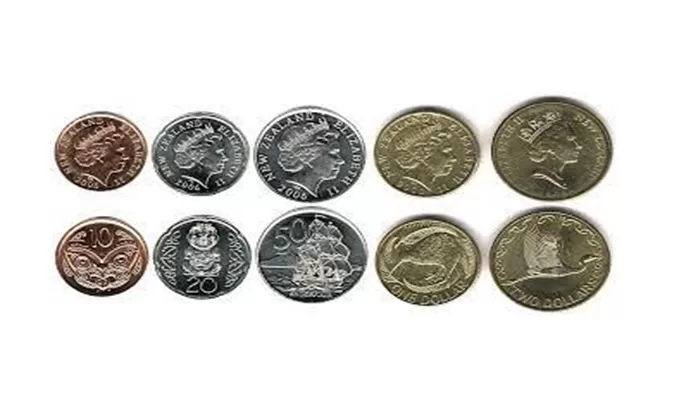Lifestyle
The Incredible History of Coins in New Zealand

In New Zealand, coins have been used since the early 1800s, when people exchanged currencies from all over the world based on their metal composition.
The beginning of New Zealand coins
Captain William Hobson, RN, the very first Governor of New Zealand, introduced British laws to the country in early 1840. As a result, certain portions of the Imperial Coinage Act of 1816 (UK) applied to the new colony as well. This permitted the standard gold, silver, and British bronze coins and various foreign coinage to circulate freely throughout New Zealand. The English Laws Statute of 1858 rendered British coinage legal tender under the rules of the act mentioned above.
There was a severe scarcity of coinage, mainly copper coins, throughout the 1840s and 1850s. Traders attempted to rectify the situation by issuing low-value paper notes, but this was quickly abandoned.
Instead, when the scarcity worsened in the 1850s, firms in Auckland and Dunedin decided to start issuing copper tokens in 1857. There were 48 traders, mainly shopkeepers, that issued their own penny and half-penny tokens in total. This tradition lasted until 1881, when it began to go away in the 1880s.
Following the Imperial Coinage Act of 1870
New Zealand’s currency was subjected to some requirements of the Imperial Coinage Act of 1870 in 1897 (UK). As a result, only British coins became the colony’s recognized legal money. It was already one of the two ‘common’ currencies, alongside a gold sovereign and half sovereign coins made in Australia.
The gradual removal of gold coins from circulation began in 1914. In 1920, the fineness of the sterling silver coin was reduced from .925 to .500.
New Zealand Started Issuing its Own Currency
By 1933, it was clear that coin smuggling and a deficit of lower value coins in New Zealand needed to be addressed. It was agreed that A single bank would issue New Zealand’s currency. The New Zealand Numismatic Society recommended that New Zealand switch to a decimal coinage system that would be used across the lands by the locals and even their best online casinos started using it to get the currency going.
In 1933, however, a unique New Zealand currency based on a fractional system was adopted (the same as sterling). The weights, sizes, and values of these new coins were identical to those of British coinage. The British standard bronze coins, penny and half-penny, were not authorized until December 22nd, 1939. These were printed in 1940 to commemorate New Zealand’s centennial.
Following The Coinage Act of 1933
The Coinage Act of 1933 oversaw New Zealand’s money, coinage, and legal tender, and it stipulated that British coins ceased to be legal tender on February 1st, 1935. New Zealand was the last and most remote of the British Commonwealth’s self-governing dominions to adopt its own currency. Cupronickel coins were introduced in 1947 to replace 500 fine silver pieces. This proclamation was signed on August 25th, 1947, under Section 8 of the Coinage Act of 1933. Coins made of both metals were still regarded as legal currency. This shift was brought about by growing mining costs and the price of silver.
The emergence of the Decimal Monetary system
A committee was formed in 1959 to investigate and comment on decimal coinage. This committee supported such a move, and it was stated in 1963 that New Zealand would switch to a decimal currency system following further research. The Decimal Currency Act of 1964 established the designs, dimensions, and standardized masses of decimal coins, first issued on July 10th, 1967. Reginald George James Berry, also known as James of Wellington, created these coins. On the back of all of our bronze and cupronickel coins at the time, his initials (JB) appeared.
The introduction of Shillings
‘Shilling’ was added to the 10 cent coin to help with the conversion to decimal currency; it appeared on mintings of the 10c coin in 1967, 1968, and 1969 before being removed in 1970. The minting of the 1968 10 cent coin was limited to collector sets. The 1c, 2c, 5c, 10c, 20c, and 50c coins became the first to be launched. The production of 1, as well as 2 cent pieces, ended on March 31st, 1989. On April 30th, 1990, both coins were demonetized. The Kiwi design on the previous 20 cent piece was moved to the new $1 coin in December 1990, and a further 20 cent coin was issued to replace it. Along with the previous two-shilling piece or florin, both styles of the 20 cent coin remain legal tender. New $1 and $2 coins were launched on February 11th, 1991, to supersede the $1 and $2 notes. Robert Maurice Conly, M.B.E. of Wellington, created these two coins and the upper 20 cent coin.
Coins in circulation today
The Reserve Bank of Australia launched new smaller and lighter plated steel 10, 20, and 50 cent coins on July 31st, 2006. At the same time, the Bank began removing the matching old silver-coloured cupronickel coins. The 5 cent coin was taken out of circulation and not replaced. The major reason is that inflation has lowered the value of the five-cent coin to the point that it has become a nuisance and of little practical worth to those conducting transactions.
Are Old NZ Coins Worth Anything?
From November 1st, 2006, the old coins were removed from circulation or deemed no longer legal currency. The Reserve Bank of New Zealand launched a public awareness campaign regarding the new coins in 2006, which featured a website, newcoins.govt.nz. In 2012, this website was decommissioned.
Where are coins minted?
The Royal Mint in the United Kingdom produces New Zealand’s $1 and $2 coins. The Royal Canadian Mint produces 10 cents, 20 cents, as well as 50 cent coins. The Bank has also employed the Royal Australian Mint, the Norwegian Mint, and the South African Mint Company in the past.



















































